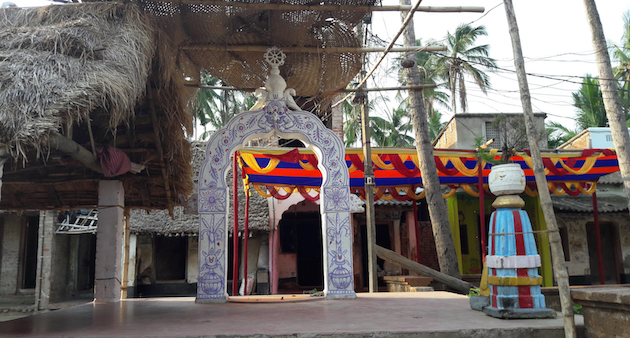Barfi pink, bright blue, deep ochre, violet and saturated orange; etchings and paintings of gods and goddesses; green parrots flying on a wall; home of the Odissi dance; lush greenery — welcome to Raghurajpur in Puri district, home to over 300 artisans who practice various traditional art forms handed down over generations.
The chitrakars (painters) are the most famous and numerous among Raghurajpur artists. They paint brightly coloured mythological stories about Lord Jagannath and other deities, especially Krishna. Derived from the Sanskrit word patta (canvas) nd chitra (painting), pattachitra originated in the 12th century.
Painstaking workmanship
Men and young boys portray dramatic mythic themes and flamboyant processions. Traditionally, women have painstakingly prepared the canvases. Today, men and women learn the art of designing and executing pattachitra paintings from their parents and grandparents, and proudly display numerous national awards for their excellent workmanship.
This artists’ village is also known for intricate palm leaf folded pictures etched in black with cutouts, delicate brushwork on tussar silk, stone and wood carvings. The stories are ubiquitous, revealed in colourfully painted coconuts, painted birds, papier-mâché toys, masks and painted boxes that are displayed on meticulously clean stone front porches. Fashioned from local materials — palm leaf, coconut, local dyes, mouse hair, stone and wood — the artworks possess unique beauty and guileless charm. They add to Raghurajpur’s lustre and colour.
The front room of each house serves as both, a studio and an exhibition space. Surprisingly non-commercial in their approach, the men and women artisans speak in Odiya, keenly showing their work and explaining the tradition, narrative and the techniques they apply.
This artists’ village is also known for intricate palm leaf folded pictures etched in black with cutouts, delicate brushwork on tussar silk, stone and wood carvings.
Read the full article from HuffingtonPost
This article was first published on VillageSquare.in, a public-interest communications platform focused on rural India.

